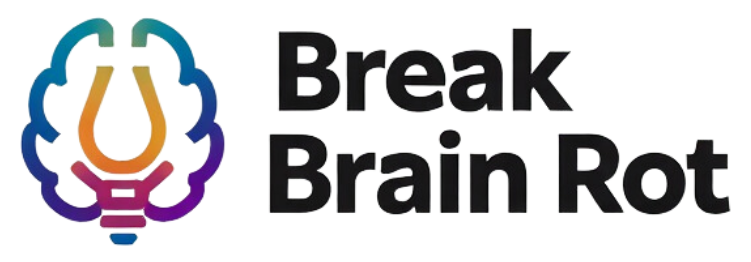In today’s fast-paced digital era, screen addiction has become an invisible epidemic impacting millions. According to recent studies, the average person spends over 7 hours a day staring at screens—a figure that’s only rising. The effects? Declining mental health, reduced productivity, and strained relationships. But there’s good news: you can learn how to overcome screen addiction and reclaim your focus. In this guide, we’ll explore practical strategies, from identifying the root causes to establishing a healthier relationship with technology.
Table of Contents
- Understanding Screen Addiction and Its Effects
- Identifying Symptoms of Screen Addiction
- Practical Strategies for Breaking Free from Excessive Screen Use
- Building a Healthier Relationship with Technology
- Long-Term Benefits of Overcoming Screen Addiction
Understanding Screen Addiction and Its Effects
What is Screen Addiction?
Screen addiction refers to the compulsive overuse of digital devices, such as smartphones, laptops, and televisions, to the point where it disrupts daily life. Unlike regular screen use, addiction arises when screen time becomes excessive, often fueled by factors like social media scrolling, online gaming, or binge-watching. The design of these digital platforms, with endless notifications and autoplay features, is intentionally addictive—keeping users hooked for hours on end.
The Impact of Screen Addiction on Your Brain and Well-being
Excessive screen use alters your brain’s chemistry, particularly in areas related to dopamine production, leading to dependency. Over time, this can result in diminished attention spans, chronic stress, and sleep disturbances. Moreover, it negatively impacts mental health, increasing the likelihood of anxiety, depression, and loneliness. According to research by the National Center for Biotechnology Information, prolonged screen time is strongly associated with reduced productivity and emotional well-being.
Identifying Symptoms of Screen Addiction
Common Behaviors of Screen Dependency
Do you constantly check your phone, even during conversations or important tasks? Perhaps you feel restless or irritable when separated from your devices. These are clear signs of screen dependency. Other common symptoms include neglecting responsibilities, staying up late glued to screens, or losing track of time while online.
Assessing Your Relationship with Screens
To better understand your habits, use tools like screen time trackers or take an online assessment to measure your level of dependence. Reflect on how screen use impacts your mood, relationships, and productivity. Ask yourself: do you turn to screens to avoid boredom or stress? Recognizing these patterns is a critical first step toward change. Explore our guide on signs of technology dependence to dive deeper.
Practical Strategies for Breaking Free from Excessive Screen Use
Setting Boundaries for Screen Time
Establishing clear limits is essential for regaining control. Start by designating screen-free zones, such as bedrooms, or creating specific tech-free periods, like during meals or before bedtime. Use app blockers or focus-enhancing tools to restrict your social media usage and encourage mindful interactions with technology.
Finding Alternative Activities to Replace Screen Use
Channel your energy into meaningful offline activities. Take up a hobby, enjoy outdoor walks, or spend quality time with friends and family. Physical activities, such as yoga or running, can improve both mental and physical health. Practicing mindfulness, like journaling or meditation, also helps break the cycle of overstimulation caused by screens.
Creating Accountability and Seeking Support
Share your goals with a trusted friend or family member. They can help hold you accountable and offer encouragement during moments of relapse. If you’re struggling, consider joining a support group tailored to screen dependency or consulting a professional who specializes in digital addiction. For resources, check out organizations like ScreenStrong.
Building a Healthier Relationship with Technology
Practicing Digital Mindfulness
Intentional screen use is key to maintaining balance. Set daily limits for your device use and avoid multitasking during important tasks. Create a plan for how you’ll use screens intentionally, minimizing unproductive scrolling and staying aware of triggers that lead to excessive use.
Incorporating Tech for Good
While screens often feel like a source of burden, they can also be used to enrich your life. Use technology to foster connections with loved ones, learn new skills, or engage in enriching activities like mindfulness apps. Strike a balance by focusing on content that educates or uplifts you, rather than solely entertaining.
Reassessing Your Digital Habits Regularly
Your relationship with screens will evolve over time, so it’s important to check in with yourself periodically. Use these routine evaluations to adjust your usage and remain aligned with your goals. For actionable tips, read our insights on digital detox techniques.
Long-Term Benefits of Overcoming Screen Addiction
Improved Focus and Productivity
When you reduce unnecessary screen use, you free up mental bandwidth to concentrate on meaningful tasks. Over time, this leads to greater efficiency at work, school, or hobbies. You’ll likely find yourself completing tasks faster and with greater accuracy than before.
Enhanced Relationships and Emotional Well-being
Less screen time creates space for deeper connections with family and friends. Instead of being mentally distracted, you’ll be more present in conversations and activities. Additionally, breaking free from the cycle of constant notifications reduces feelings of stress and anxiety, promoting better overall mental health.
Greater Sense of Time and Fulfillment
One of the most profound benefits of overcoming screen addiction is discovering how much time you gain. With a clearer focus and more hours in your day, you’ll be able to pursue personal goals, engage in meaningful experiences, and savor a heightened sense of fulfillment.
Frequently Asked Questions
What are the first steps to overcoming screen addiction?
The first steps include acknowledging the problem, tracking your screen time, and setting boundaries for tech-free periods each day.
How do I maintain productive habits after reducing screen time?
Develop a schedule filled with engaging offline activities, such as exercise, hobbies, or quality time with loved ones. Habit stacking—pairing new, productive habits with existing routines—can also help.
Are there tools available to help minimize screen addiction?
Yes! Apps like Freedom, Forest, and Moment are excellent for monitoring and limiting screen time.
How can I encourage my family to reduce screen dependency?
Lead by example and suggest family-wide practices like “no phone zones” during meals and scheduled tech-free nights.
What role does mindfulness play in overcoming screen addiction?
Mindfulness encourages intentional actions and helps identify unhealthy triggers, making it easier to manage cravings and reduce reliance on screens.
Conclusion
Breaking free from screen addiction is a transformative journey that empowers you to reclaim your time, focus, and well-being. By understanding the problem and taking actionable steps, you can develop a healthier relationship with technology. Start small, stay consistent, and remember—it’s never too late to prioritize your mental health and productivity. Begin your journey today and rediscover the joy of living fully present.


